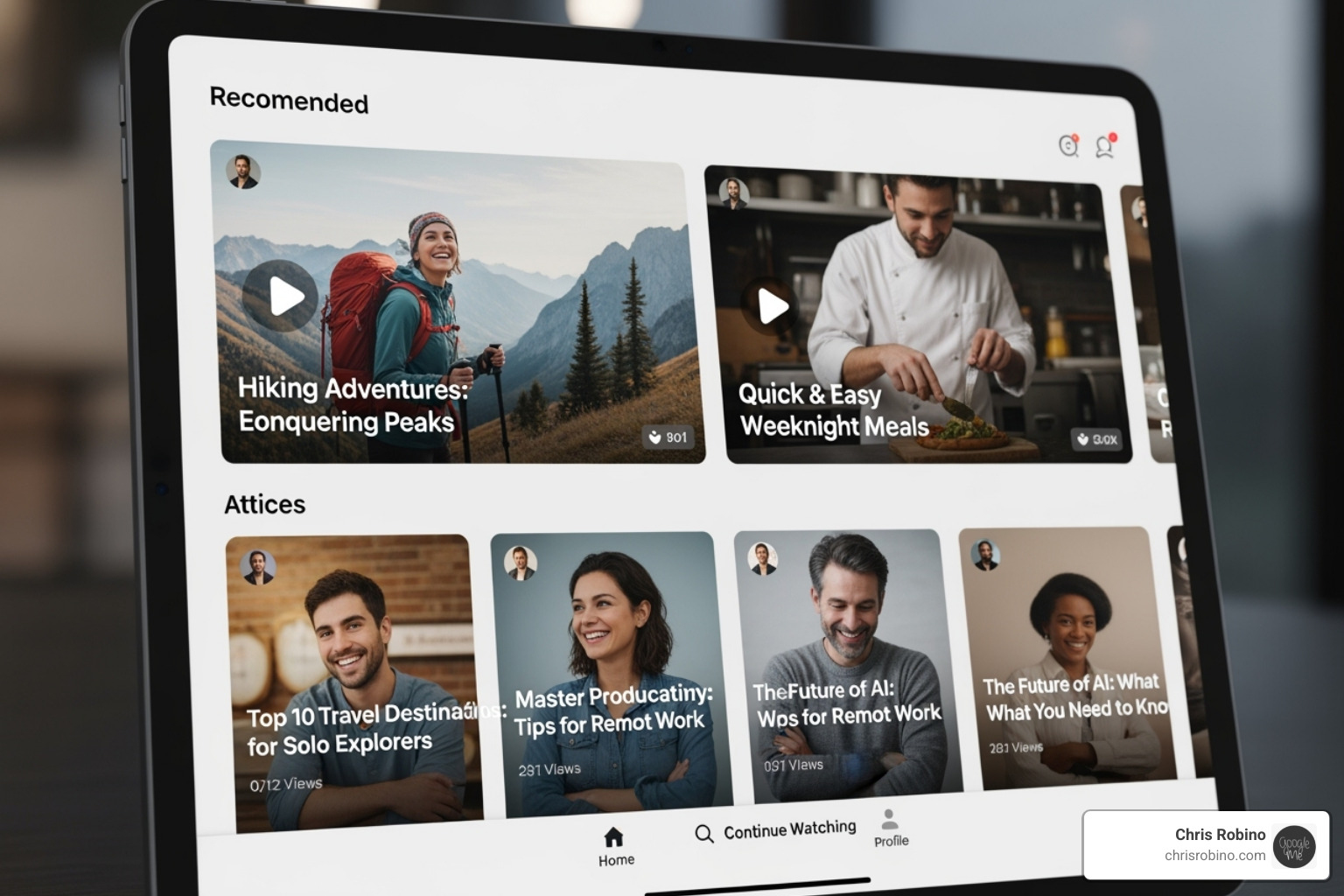Why Enterprise SEO Is a Force Multiplier for Large Companies
Enterprise SEO is not a channel—it’s an operating system for profitable growth. At scale, organic search influences brand findy, product consideration, and revenue across thousands (or millions) of URLs, multiple markets, and complex tech stacks. The organizations that win treat SEO as a cross-functional discipline that unites product, engineering, content, analytics, brand, and legal around shared outcomes.
For large companies, the challenge isn’t “how to rank for more keywords.” It’s how to build durable visibility, reduce acquisition costs, and compound results without breaking governance, compliance, or site performance. Success depends on systems: clear ownership, scalable technical foundations, content operations that map to customer journeys, authority that’s earned—not purchased—and instrumentation that turns search data into business decisions.
What separates high-performing enterprise SEO programs:
- Strategy anchored to business goals: Tie non-brand organic revenue, pipeline, and cost savings to your roadmap—not vanity metrics.
- Governance and operating model: Define who decides, who does, and how work flows across teams. Create SLAs for tech, content, and approvals.
- Technical excellence at scale: Architect for crawlability, speed, and change. Automate monitoring and remediation.
- Content systems, not one-offs: Build reusable templates and workflows that deliver consistency and quality across thousands of pages.
- Authority with purpose: Earn coverage and citations through unique insights, useful resources, and brand trust—not shortcuts.
- Measurement and experimentation: Forecast, test, learn, and prioritize like a product team.
Enterprise SEO accelerates outcomes across the funnel:
- Demand capture: Align pages with high-intent queries, reduce friction, and improve conversion.
- Demand creation: Publish authoritative research, perspectives, and resources that earn links and coverage.
- Experience: Improve site speed, accessibility, and navigation to lift both rankings and revenue.
Key performance indicators to manage:
- Non-brand organic revenue and assisted conversions
- Organic share of voice across priority topics
- Ranking distribution (top-3, top-10, page-1) by page type
- Crawl-to-index efficiency and index health
- Core Web Vitals pass rates and page weight trends
- Backlink quality growth and referring domain diversity
- Content velocity and freshness by topic cluster
- Time-to-publish and time-to-fix for critical issues
With the right operating cadence—weekly issue triage, monthly roadmap reviews, and quarterly growth experiments—enterprise SEO becomes a compounding asset that reduces dependency on paid media and strengthens every stage of the customer journey. Research on Core Web Vitals shows that pages that meet the recommended thresholds see significant improvements in user engagement metrics and conversion rates.

The Enterprise SEO Playbook: What Works Now
Enterprise SEO rewards clarity, consistency, and scale. These are the pillars that consistently move the needle for large companies.
Technical Foundations That Scale
- Crawl budget and architecture: Flatten where possible, avoid infinite URL spaces, and control faceted navigation with parameter rules, canonicalization, and robots directives. Ensure sitemaps reflect canonical, indexable pages.
- Internal linking systems: Build contextual modules and navigation patterns that pass equity to key templates. Automate detection of orphaned pages and thin clusters.
- Rendering and speed: Prefer server-side rendering or hydration strategies that expose crawlable HTML. Continuously optimize Core Web Vitals—especially LCP, INP, and CLS—on high-traffic templates.
- Canonicals, pagination, and duplication: Standardize canonical rules, consistent pagination patterns, and language variants with hreflang. Eliminate near-duplicates and consolidate with clear canonical clusters.
- Log-file analysis: Use logs to verify crawl paths, prioritize page types, and identify blockers (chain redirects, bloated 404s, parameter traps).
- Security and compliance: Enforce HTTPS everywhere, strict redirect governance, and stable URL patterns to prevent rankings volatility during releases.
AI, Automation, and Quality Control

- Content ops acceleration: Use assistive tools to draft outlines, suggest internal links, generate meta tags, and flag gaps—always reviewed by subject-matter experts.
- Monitoring pipelines: Automate checks for noindex, robots, canonical mismatches, schema errors, and CWV regressions on every deploy.
- Risk management: Maintain human oversight, version control, and red-team reviews to avoid inaccuracies and policy violations.
Content Strategy Built for Journeys
- Intent mapping: Group keywords by journey stage (problem, solution, product, post-purchase) and align page types accordingly (guides, comparisons, category, product, support).
- Topical authority: Organize content into clear clusters with cornerstone pages. Ensure every article supports a theme and interlinks coherently.
- Production playbooks: Standardize briefs, SME reviews, editorial QA, and legal approvals. Track time-to-publish and fix bottlenecks.
- Structured data: Implement Organization, Product, Review, FAQ, HowTo, Article, Breadcrumb, and JobPosting where relevant to earn rich results and feed discovery.
- Content freshness: Build refresh cadences for revenue-driving content. Update stats, examples, internal links, and media.
Programmatic SEO With Guardrails

- Template-driven value: Scale location, inventory, or knowledge-base pages using robust templates that provide genuine utility, not boilerplate.
- Deduplication: Set strict uniqueness criteria for titles, H1s, intros, and offers. Collapse near-duplicates into canonical families.
- Quality thresholds: If a page lacks sufficient unique value, keep it out of the index until it meets standards.
Authority and Reputation at Scale
- Digital PR: Create original data studies, tools, and resources that earn natural coverage and citations.
- Expert-driven content: Showcase credentials, add author bios, and document editorial standards to reinforce trust.
- Reputation management: Monitor brand SERPs, reviews, and knowledge panels. Respond and improve experiential gaps that surface in search.
Winning the SERP Beyond Blue Links
- Featured snippets and related question boxes: Structure answers concisely (40–60 words), use clear subheads, lists, and tables where appropriate.
- Video and image optimization: Provide transcripts, descriptive filenames, and alt text; compress and serve images responsibly.
- Local and maps: Ensure consistent NAP data, complete profiles, and localized landing pages where relevant.
International and Regional SEO
- Market selection: Use search demand, competition, and operational readiness to prioritize expansions.
- Hreflang and localization: Implement correct hreflang, translate natively, and adapt offers, currency, and compliance elements.
- In-market content and links: Partner with local experts to create regionally resonant content and earn relevant citations.
Analytics, Forecasting, and Experimentation
- Measurement architecture: Track events across templates to connect SEO pages to revenue, trials, or qualified leads.
- Forecasting: Model traffic and revenue impact from ranking distribution shifts, template upgrades, and content velocity.
- Experimentation: Run SEO-safe tests (copy, schema, internal links, module order) using holdout pages or geographies.
- Search insights: Combine keyword trends with on-site search queries to inform product, content, and merchandising decisions.
On-Site Experience, Conversion, and Retention
- Navigation and findability: Strengthen category IA, related links, and filters that expose depth without creating crawl traps.
- Conversion alignment: Match page intent with calls-to-action and assistive content (comparisons, FAQs, calculators) to lift conversion.
- Recirculation: Use recommended reading and modules to extend sessions and increase content ROI.
Personalization and Privacy-Conscious Targeting

- Segmented experiences: Personalize responsibly with server-side rules that do not hide primary content from crawlers.
- Consent and compliance: Honor user preferences and avoid cloaking behavior created by personalization logic.
Migrations and Replatforming Without Losing Equity
- Inventory mapping: Audit every URL, map to new destinations, and avoid shotgun redirects.
- Redirect rigor: Use one-to-one, final 301s. Test, measure, and remediate at scale.
- Parallel environments: Validate indexing signals (canonicals, structured data, meta) before launch with controlled rollouts.
At scale, the compounding effect comes from consistency: enforce standards, monitor continuously, and iterate through a prioritized backlog.
From Strategy to Execution: A Practical Enterprise SEO Roadmap
A clear operating plan keeps teams aligned and momentum high. Use this phased approach to turn strategy into predictable outcomes.
First 90 Days: Stabilize, Instrument, and Ship Wins
0–30 days
- Establish governance: Define roles, workflows, SLAs, and a single backlog across SEO, product, content, and engineering.
- Baseline health: Crawl the site, audit templates, review logs, and benchmark CWV, index status, and ranking distribution.
- Fix critical issues: Resolve noindex/robots mistakes, broken canonicals, redirect chains, and sitemap inaccuracies.
- Measurement foundation: Implement event tracking, revenue attribution for key templates, and dashboards with shared KPIs.
31–60 days
- Intent-to-template mapping: Align priority topics to the right page types (guides, category, product, support, comparison).
- Internal linking system: Launch contextual link modules and related content components on cornerstone templates.
- Structured data rollout: Add Organization, Breadcrumb, and template-appropriate schema to win rich results.
- Content operations: Publish the editorial playbook, SME review loop, and refresh cadence for top revenue pages.
61–90 days
- Programmatic cluster: Ship one high-value template at scale (e.g., locations, FAQs, or inventory) with quality safeguards.
- Digital PR calendar: Plan quarterly data studies or resources designed to earn authoritative coverage.
- Experimentation: Run the first controlled tests on copy, module order, and internal link placements.
- Reporting rhythm: Stand up weekly triage, monthly roadmap reviews, and executive summaries tied to business KPIs.
Months 3–12: Scale What Works, De-Risk What Doesn’t
- Technical sprints: Address CWV on the heaviest templates, refine rendering strategies, and optimize faceted parameters.
- Content velocity: Expand clusters, refresh winners, and retire or consolidate underperformers to tighten topical authority.
- International expansion: Implement hreflang, localize high-intent templates, and activate in-market link earning.
- SERP feature capture: Systematically target featured snippets, related questions, video, and image surfaces with structured, concise content.
- Forecasting and budgeting: Model revenue impact of proposed initiatives and prioritize by expected ROI and effort.
- Migration readiness: Maintain playbooks for domain, subfolder, or platform changes; rehearse in staging with measurable gates.
Operating Cadence and KPIs
- Weekly: Health checks, issue remediation, and sprint planning across SEO, dev, and content.
- Monthly: Performance reviews, experiment readouts, and backlog reprioritization tied to outcomes.
- Quarterly: Strategy checkpoints, international adds, and technical roadmap updates.
Core KPIs to track across the program:
- Non-brand organic revenue (and assisted conversions)
- Organic share of voice for priority topics
- Top-3/Top-10 ranking distribution by template
- Index coverage, crawl-to-index ratio, and error resolution time
- Core Web Vitals pass rates on key templates
- Referring domain growth and link quality metrics
- Content production and refresh velocity by cluster
The Enterprise SEO Advantage
When SEO is embedded into product and publishing, large companies unlock a durable advantage: lower acquisition costs, higher brand trust, and a self-reinforcing loop of discovery and conversion. The playbook is straightforward—architect for scale, publish with intent, earn authority, and instrument everything—but the discipline to operate it consistently is what separates leaders from everyone else.
Adopt an operating model, not a one-off campaign. Align teams, standardize templates, automate checks, and keep a tight experimentation loop. That’s how enterprise SEO compounds—quarter after quarter, market after market.

